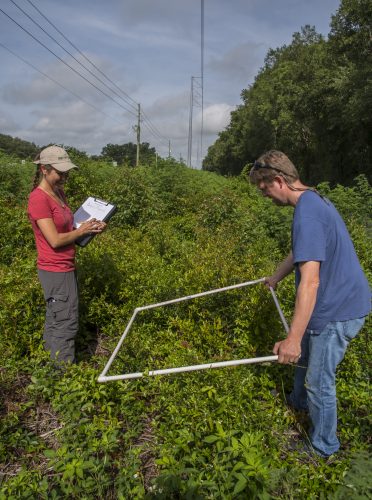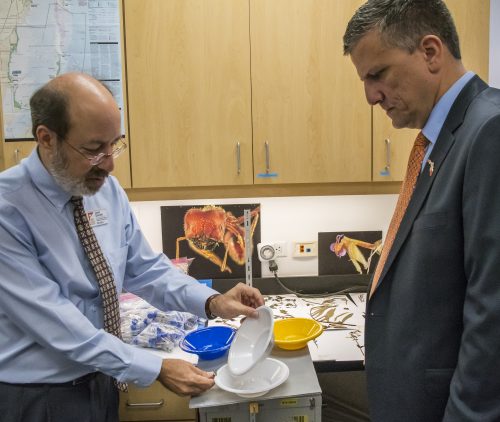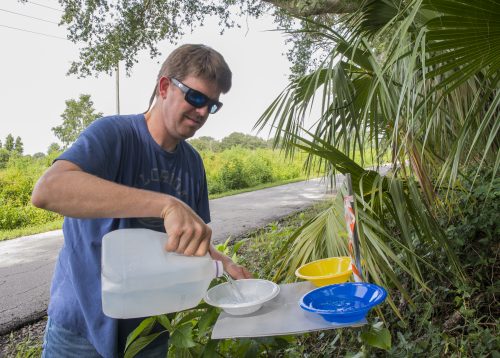
GAINESVILLE, Fla. — The Florida Museum of Natural History recently received its second grant from the Duke Energy Foundation to fund research on how rights of way vegetation management helps support and benefit pollinator populations.
Jaret Daniels, director of the museum’s McGuire Center for Lepidoptera and Biodiversity and a University of Florida associate professor of entomology and nematology, received an additional $88,500 as part of a two-year grant totaling $180,000.
“This second-year award is essential for ecological studies, such as this one, in order to better evaluate trends and avoid any single-year anomalies,” Daniels said.
There are two new objectives for the research. The first is to establish baseline data of plant species diversity as well as abundance and insect pollinators within existing, managed rights of way compared to landscapes directly adjacent to them, such as forested land. The second is to compare the plant and insect pollinator species diversity and abundance in rights of way of various conditions.

“Through the Florida Museum’s pollinator research, we are able to learn more about developing wildlife habitats on working lands, like our power corridors, as a key to conservation in Florida,” said Harry Sideris, Duke Energy Florida state president. “As a steward of the environment, Duke Energy is proud to support local programs, such as this one, that protect and restore wildlife and natural resources and make a positive difference for our customers, communities and the future we share.”
Working with Duke representatives last year, Daniels and his six team members selected 18 North Central Florida rights of way sections to study, identifying more than 4,000 insect and 119 flowering plant species.

Daniels said expected benefits from further research on these sections include development of best vegetative management practices for pollinator conservation and an opportunity for an expanded dialogue with the public regarding the importance of roadside management.
“We hope that this will draw attention to the conservation value that such often underappreciated managed lands provide, especially for smaller organisms such as insect pollinators,” Daniels said.
For more information, visit www.floridamuseum.ufl.edu/index.php/mcguire/home or www.floridamuseum.ufl.edu/pressroom/2017/08/03/duke-energy-foundation-grant-to-fund-pollinator-research.
-30-
Writer: Jessica Finkel, PRintern@flmnh.ufl.edu
Source: Jaret Daniels, 352-273-2022, jdaniels@flmnh.ufl.edu
Media contact: Paul Ramey, 352-273-2054, pramey@flmnh.ufl.edu